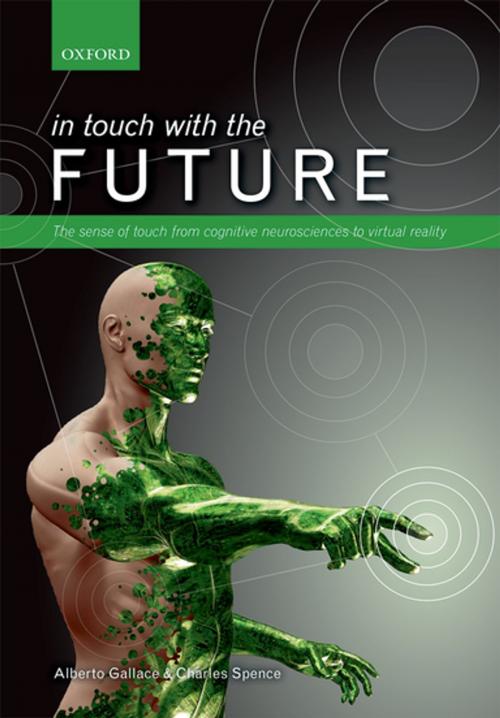In touch with the future
The sense of touch from cognitive neuroscience to virtual reality
Nonfiction, Health & Well Being, Psychology, Cognitive Psychology, Science & Nature, Science| Author: | Alberto Gallace, Charles Spence | ISBN: | 9780191501814 |
| Publisher: | OUP Oxford | Publication: | January 30, 2014 |
| Imprint: | OUP Oxford | Language: | English |
| Author: | Alberto Gallace, Charles Spence |
| ISBN: | 9780191501814 |
| Publisher: | OUP Oxford |
| Publication: | January 30, 2014 |
| Imprint: | OUP Oxford |
| Language: | English |
Out of all the human senses, touch is the one that is most often unappreciated, and undervalued. Yet, the surface of the human body, the skin, is actually one huge sheet of tactile receptors. It provides us with the means to connect with our surroundings. Despite the important role that vision plays in our everyday lives, it is the skin that constitutes both the oldest, and by far the largest of our sense organs. The skin protects our body from the external world and, at the same time, informs us about what occurs on its surface. In Touch With The Future explores the science of touch, bringing together the latest findings from cognitive neuroscience about the processing of tactile information in humans. The book provides a comprehensive overview of scientific knowledge regarding themes such as tactile memory, tactile awareness (consciousness), tactile attention, the role of touch in interpersonal and sexual interactions, and the neurological substrates of touch. It highlights the many ways in which our growing understanding of the world of touch can, and in some cases already are, being applied in the real world in everything from the development of virtual reality (VR) environments, tablet PCs, mobile phones, and even teledildonics - the ultimate frontier in terms of adult entertainment. In addition, the book shows how the cognitive neuroscience approach to the study of touch can be applied to help improve the design of many real-world applications/products as well as to many of our everyday experiences, such as those related to the appreciation of food, marketing, packaging design, the development of enhanced sensory substitution systems, art, and man-machine interfaces. Crucially, the authors makes a convincing argument for the view that one cannot really understand touch, especially not in a real-world context, without placing it in a multisensory context. That is, the senses interact to influence tactile perception in everything - from changing the feel of a surface or product by changing the sound it makes or the fragrance it has. For students and researchers in the brain sciences, this book presents a valuable and fascinating exploration into one of our least understood senses
Out of all the human senses, touch is the one that is most often unappreciated, and undervalued. Yet, the surface of the human body, the skin, is actually one huge sheet of tactile receptors. It provides us with the means to connect with our surroundings. Despite the important role that vision plays in our everyday lives, it is the skin that constitutes both the oldest, and by far the largest of our sense organs. The skin protects our body from the external world and, at the same time, informs us about what occurs on its surface. In Touch With The Future explores the science of touch, bringing together the latest findings from cognitive neuroscience about the processing of tactile information in humans. The book provides a comprehensive overview of scientific knowledge regarding themes such as tactile memory, tactile awareness (consciousness), tactile attention, the role of touch in interpersonal and sexual interactions, and the neurological substrates of touch. It highlights the many ways in which our growing understanding of the world of touch can, and in some cases already are, being applied in the real world in everything from the development of virtual reality (VR) environments, tablet PCs, mobile phones, and even teledildonics - the ultimate frontier in terms of adult entertainment. In addition, the book shows how the cognitive neuroscience approach to the study of touch can be applied to help improve the design of many real-world applications/products as well as to many of our everyday experiences, such as those related to the appreciation of food, marketing, packaging design, the development of enhanced sensory substitution systems, art, and man-machine interfaces. Crucially, the authors makes a convincing argument for the view that one cannot really understand touch, especially not in a real-world context, without placing it in a multisensory context. That is, the senses interact to influence tactile perception in everything - from changing the feel of a surface or product by changing the sound it makes or the fragrance it has. For students and researchers in the brain sciences, this book presents a valuable and fascinating exploration into one of our least understood senses















